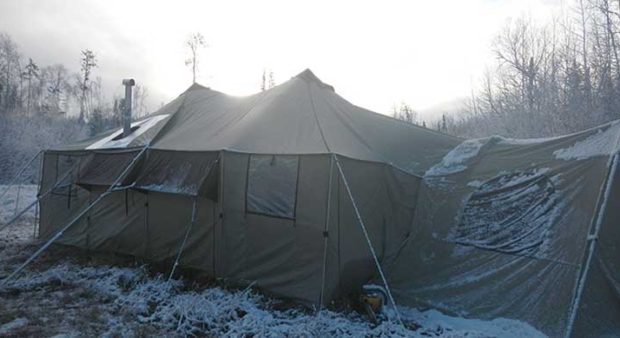
Moose season is the time of year I anticipate most. I love the challenge of pursuing them in northern Ontario along muskegs and riverbanks. If you’re like me, maximizing time afield rather than around camp is a top priority. Here’s some practical advice that will take the challenge out of organizing and setting up so you can focus on the task at hand — bringing down a moose.
1. Gear check
Warm and comfortable accommodations are crucial to a successful camp. If you use a prospector-style tent for your home base, set it up in the backyard before you leave for your hunt. This has made our team efficient at setting it up at camp. It not only gives you practice at erecting it, you have an opportunity to check for damage. This year we set our tent up to find mouse holes in the fly. It was much easier to mend holes at home then discovering and dealing with the frustration of mending them in the bush.
While the camp gear is out, add some high heat paint to the portable wood stove. This extends the longevity of the stove and allows you to stay warm, an essential to getting proper rest and drying off wet clothes.
Related reads:
2. Keep a master list
I keep a digital master list of essential items and tweak it from year to year. Colour-coding the list by person helps everyone be responsible for bringing their items and ensures no essentials are left behind.
List off a daily menu with itemized food ingredients for each meal. This will help plan for the right amount of essentials such as bread, sugar and eggs, etc. and use space efficiently.
3. Don’t negate nourishment
The traditional canned beans and jerky are a must, but adding a few specialties will keep your energy reserves full. Consider bringing some pre-made hearty meals like stew, stroganoff, or other dishes of the like that can be easily and quickly heated. Home canned soup, fruit and veggies are also good when looking for healthy meals while minimizing food preparation time. (Check out these great hunt camp cooking tips)
4. Tent tactics
When setting up a tent, pay attention to the local topography. Higher ground, preferably on well-drained soils, such as sand, is ideal. Being sheltered from prevailing winds can save a lot of headaches, too. If possible, think about setting up within bucket-carrying distance of a water body.
Our tent comes with a vestibule that really helps keep the main tent quarters of the tent clean and our hunting clothing scent free. An addition to your tent door with a tarp for walls and floor propped up with aluminum or homemade wooden poles, or a separate room reserved in the cabin would do the same.
We also have a slippers-only rule inside the tent that really helps keep the living quarters clean and dry and lessons clean up time.
5. Safety
My first aid kit accounts for remote location emergency. A water-tight container can be filled with emergency items from your local drug or dollar store. Include items that will not be within timely reach, such as antihistamine, thermometer and wound closures. Some businesses specialize in ready-made first aid kits catered for remote activities. A small ABC fire extinguisher is also a good idea for the wood-heated cabin or tent. Before I leave home I like to find out where the closest hospital is in case of emergency.
6. Mapping
Google Earth is a great free tool for hunters. Printing off maps of your hunting area is fantastic for interpreting natural features such as forests from wetlands or habitat edges that may serve as wildlife corridors. My secret weapons are forestry management plan maps. These contain unique information such as known moose concentration areas and logging features. I get a few copies of the maps of our area printed on waterproof paper each year.
7. Storing the moose
Moose hunters know that the seemingly endless hours of set-up and scouting doesn’t guarantee that you’re actually going to harvest a prized animal. Some of you may have been hunting for years and never brought in more than a partridge. But, if this is your year will you be ready to store what could be a half-ton animal? Be sure you have some sort of refrigeration plan in place.
This can be remedied with a generator-rigged chest freezer on a trailer. Another option before leaving home is pre-arranging cold-room space with a local outfitter or butcher. Doing so will prevent the need to race home if you harvest a moose early in the week.
These planning tips will help you to enjoy each other’s company, decompress, and focus on the hunt. You won’t be worrying about anything other than how to pull a monster out of the muskeg!


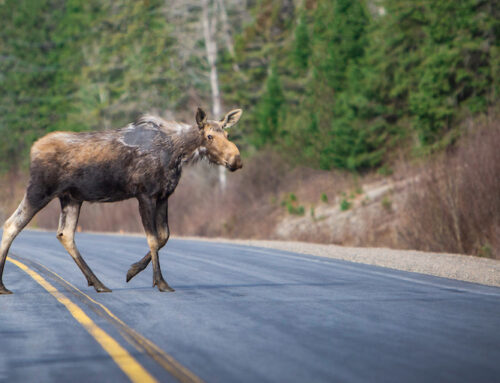
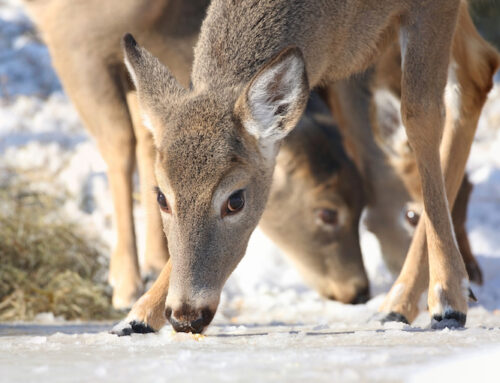
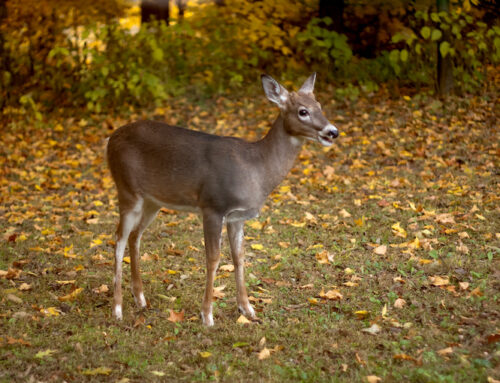
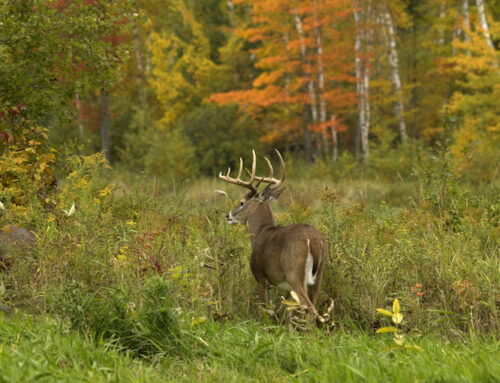
Leave A Comment